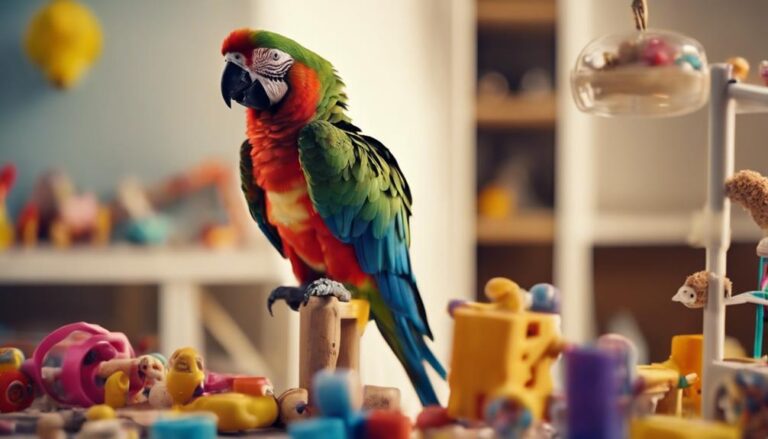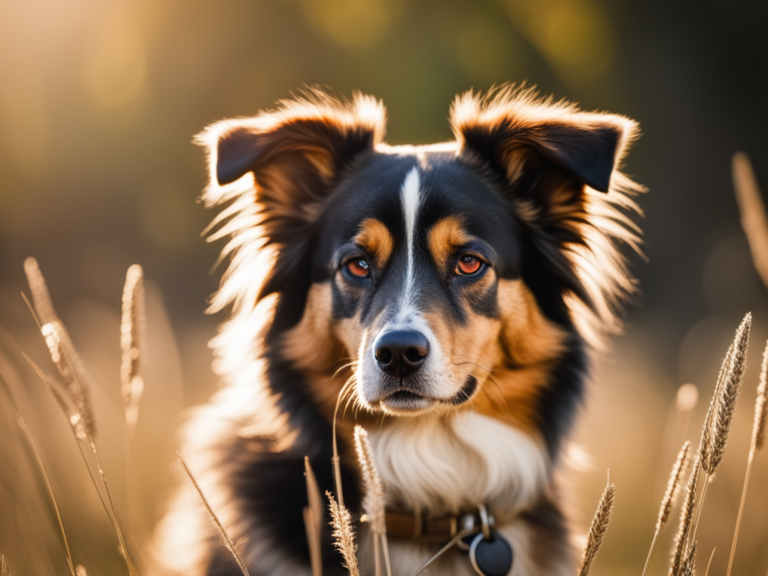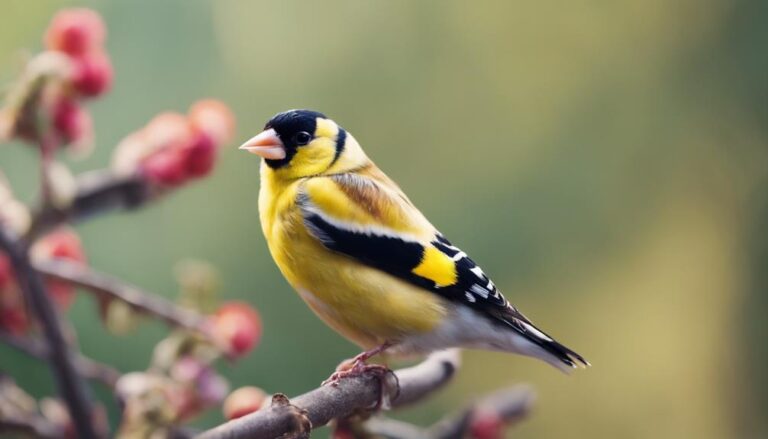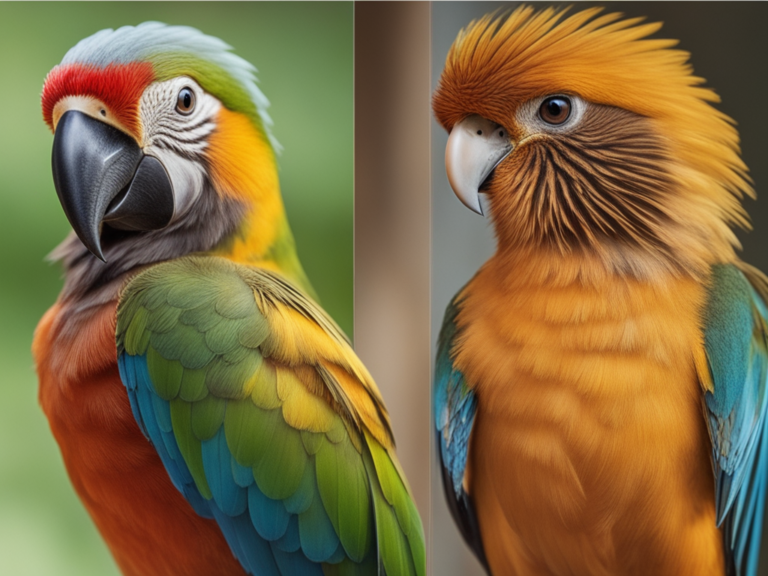Molting Macaws: Pet Birds And Their Molting Process
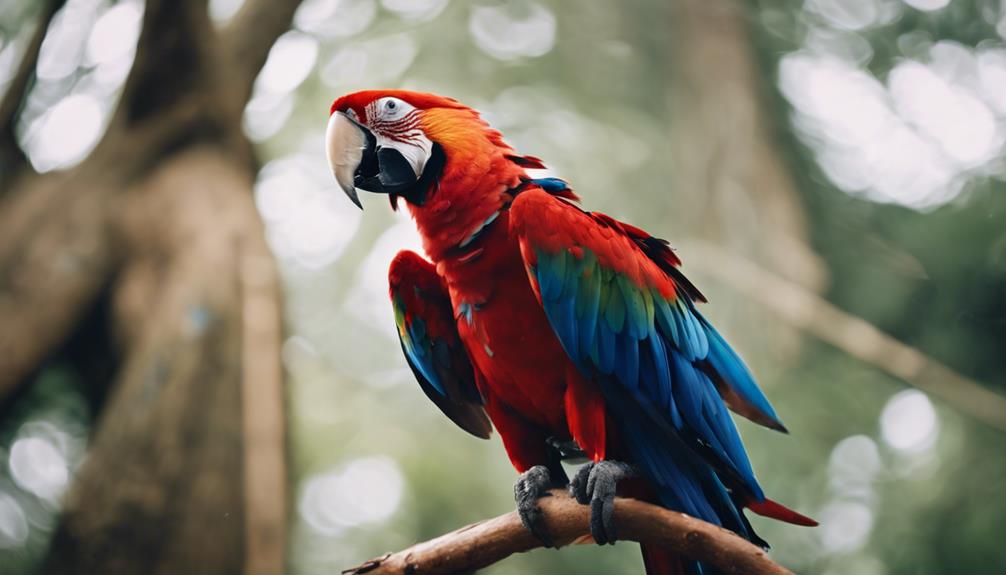
Pet Birds And Their Molting Process: Ever marveled at your molting macaw’s seemingly endless supply of feathers decorating your home like a poorly planned interior design scheme? Well, the molting process in pet birds, particularly macaws, is a feathered tale worth exploring. From the subtle signs pointing to an imminent molt to the dietary adjustments needed to support healthy feather regrowth, understanding this natural cycle can shed light on your macaw’s well-being. So, let’s unravel the intricacies of molting macaws and how to navigate this phase with finesse and care.
Molting Basics
Have you ever wondered how your pet bird’s molting process works? Understanding the basics of molting can help you provide better care for your feathered friend. Feather health is crucial during molting, as this process involves the shedding and regrowth of feathers. Grooming techniques play a significant role in maintaining your bird’s feather quality. Regularly bathing your bird and providing opportunities for dusting or preening can help keep their feathers clean and healthy.
Molting triggers can vary among different bird species, but environmental factors often play a significant role. Changes in daylight hours, temperature, and humidity can signal to your bird that it’s time to molt. Providing a stable environment with consistent lighting and temperature can help regulate your bird’s molting cycle. Additionally, a balanced diet rich in essential nutrients is crucial for supporting healthy feather growth during molting.
When your bird is molting, you may notice an increase in feather shedding and changes in their behavior. Some birds may become more irritable or vocal during this time, while others may seek out additional opportunities for grooming. By understanding the basics of molting and the importance of feather health and grooming techniques, you can ensure that your pet bird goes through this natural process smoothly and comfortably.
Types of Molts
Now, let’s talk about the different types of molts your pet bird might go through. You’ll learn about the seasonal patterns these molts follow, the varying durations they can last, and essential feather care during these periods. Understanding these distinctions will help you better support your bird through its molting stages.
Seasonal Molting Patterns
During the molting process, pet birds shed old feathers and grow new ones in a cyclical pattern known as seasonal molting. Feather coloration can be affected by nutrition during this phase, with a well-balanced diet promoting vibrant and healthy plumage. Environmental factors, such as changes in daylight length, temperature, and humidity, play a crucial role in triggering molting in birds. Additionally, a bird’s behavior might alter during molting as they may become more irritable or seek out additional grooming activities. Understanding these seasonal molting patterns can help bird owners provide the necessary support and care to their feathered companions during this natural process.
Molting Duration Differences
Exploring the different types of molts reveals varying durations in which pet birds undergo the process of shedding old feathers and regrowing new ones. Molting speed variations are influenced by seasonal factors, with some birds molting quickly over a short period while others take longer to complete the process. These differences can be attributed to molting challenges such as health conditions or stress, which may slow down the molting process. Additionally, environmental influences like temperature and humidity can also affect the duration of molting in pet birds. Understanding these variations in molting durations can help bird owners better support their pets through this natural but sometimes challenging process.
Molting Feather Care
Understanding the types of molts is essential for proper molting feather care for your pet birds. Different molting stages such as the basic molt, pre-basic molt, and pre-alternate molt require specific attention to your bird’s feathers. During these times, focus on feather conditioning and grooming to support healthy feather growth. Providing molting supplements and products can also aid in the molting process, ensuring your pet bird receives the necessary nutrients for feather regeneration. By being aware of the types of molts your bird goes through, you can tailor your feather care routine to meet their specific needs, promoting strong and vibrant feathers. Stay attentive to your bird’s molting patterns to provide the best care during this crucial time.
Molting Signs
You may notice specific signs when your pet bird is molting, such as distinct feather loss patterns and changes in its appearance. Understanding the duration of the molting process can help you provide appropriate support and care during this period of transition. Paying attention to these signs will enable you to ensure your bird’s comfort and well-being as it goes through its molting cycle.
Feather Loss Patterns
During the molting process, pet birds exhibit specific feather loss patterns that serve as clear signs of this natural occurrence. Feather shedding is a common sight during molting, where old or damaged feathers are replaced with new ones. This shedding may happen gradually or in patches, depending on the bird species and individual. The plumage renewal process is essential for birds to maintain healthy feathers, which are crucial for flying, insulation, and display. You may notice your pet bird preening more frequently during molting, as they work to remove the old feathers and make way for new growth. Understanding these feather loss patterns can help you support your bird through this necessary phase of renewal.
Duration of Molting
Feather loss patterns during molting provide valuable insights into the duration of this natural process, offering clear signs of renewal in pet birds. Molting frequency varies among different bird species, with some molting once a year and others molting more frequently. The duration of molting can range from a few weeks to several months, depending on the bird’s age, health, and environmental factors. During this time, you may notice your pet bird becoming more irritable or quieter than usual, as molting can be a bit uncomfortable for them. However, as the new feathers start to grow, you’ll witness the remarkable process of feather regrowth, leading to a vibrant and healthy plumage for your beloved feathered friend.
Molting Timeline
As your pet bird goes through the molting process, feathers will gradually shed and be replaced over a specific timeline. The molting timeline varies among different bird species but typically lasts anywhere from a few weeks to a few months. During this time, you may notice changes in your bird’s behavior and appearance.
Feather regrowth progress during molting is a fascinating process to observe. Initially, you may see small pin-like structures emerging from the follicles where the old feathers were shed. These structures, known as pin feathers or blood feathers, are encased in a waxy coating that gradually peels away as the feather continues to grow. You should avoid touching or disturbing these delicate structures as they are sensitive and can cause bleeding if broken.
Molting behavior observations are crucial for understanding your bird’s well-being during this period. Some birds may become more irritable or withdrawn as they experience discomfort from new feathers pushing through. Providing a quiet and stress-free environment can help your bird feel more comfortable during this transitional phase. Additionally, offering nutritious foods and ensuring access to clean water is essential for supporting your bird’s overall health and aiding in the feather regrowth process.
Molting Diet
Observing your pet bird’s molting process can provide valuable insights into the dietary adjustments needed to support healthy feather regrowth. During molting, your bird’s body requires specific dietary requirements to ensure the regrowth of strong and vibrant feathers. It’s essential to focus on providing a well-rounded diet that supports this regrowth phase.
Dietary requirements play a crucial role in your bird’s molting process. Make sure to offer a balanced diet consisting of high-quality pellets, fresh fruits, and vegetables. These foods provide essential vitamins, minerals, and nutrients that are vital for feather regeneration. Additionally, consider incorporating foods rich in protein, such as cooked eggs or legumes, to support healthy feather development.
In some cases, your bird may benefit from nutritional supplements during molting. Consult with your avian veterinarian to determine if your bird would benefit from supplements like vitamin D3, omega-3 fatty acids, or calcium. These supplements can help ensure that your bird has all the necessary nutrients to support a smooth molting process and promote the growth of strong, shiny feathers.
Molting Care
Ensure your pet bird’s comfort and well-being during the molting process with proper molting care. Feather health is crucial during molting, so incorporating grooming techniques is essential. Gently misting your bird with lukewarm water can help soothe irritated skin and facilitate the removal of old feathers. Consider providing a shallow dish for your bird to bathe in, promoting healthy feather growth and alleviating any discomfort.
Molting challenges may arise, leading to behavior changes in your pet bird. It is common for birds to become more irritable or fatigued during this time. Be patient and understanding with your feathered friend as they may require extra rest and reassurance. Offering nutritious foods rich in vitamins and minerals can support their overall health and aid in the molting process.
Regularly inspect your bird’s plumage for any signs of abnormal molting or feather issues. If you notice excessive feather loss, bald spots, or signs of skin irritation, consult with an avian veterinarian promptly. Maintaining a clean environment and providing opportunities for your bird to preen will also contribute to their feather health.
Feather Health
When caring for your pet bird, understanding their feather growth cycles and providing proper nutritional support are essential for maintaining feather health. Knowing when and how your bird molts can help you anticipate their needs and ensure they have the right nutrients to support healthy feather regrowth. By paying attention to these aspects, you can help your feathered friend maintain vibrant plumage and overall well-being.
Feather Growth Cycles
Keeping an eye on your pet bird’s feather growth can provide valuable insights into their overall health and well-being. Feather regrowth is a crucial part of the molting process, ensuring your bird maintains its plumage. During this cycle, you may notice changes in feather coloration, indicating the growth of new, healthy feathers.
Understanding your bird’s molting frequency and triggers, such as changes in daylight hours or temperature, can help you anticipate when to expect molting. By observing the feather growth cycles closely, you can assess if your pet bird is going through a normal molting process or if there are any underlying health issues that may require attention. Monitoring these cycles is essential for maintaining your bird’s feather health and overall wellness.
Nutritional Support
For optimal feather health in your pet bird, a well-balanced diet rich in essential nutrients is crucial. Providing your bird with a variety of foods such as fruits, vegetables, seeds, and pellets can help maintain healthy feathers. Nutritional supplements like vitamins and minerals can also support feather health, especially during molting periods.
Ensuring that your bird’s diet is diverse and nutritious not only promotes feather growth but also boosts overall well-being. Additionally, reducing stress in your bird’s environment through regular interaction, appropriate cage size, and a consistent routine can contribute to healthier feathers. By focusing on a balanced diet, incorporating nutritional supplements, offering diet variety, and providing stress relief, you can help your pet bird maintain vibrant and strong feathers.
Stress Management
To help your pet bird cope with stress during the molting process, it is essential to create a calm and peaceful environment in their living space. Stress relief is crucial during this time, and implementing relaxation techniques can greatly benefit your feathered friend. One effective relaxation technique is to provide a quiet space for your bird where they can retreat and feel safe. This area should be away from high-traffic areas in your home to minimize noise and disturbances.
Additionally, maintaining a consistent daily routine can help reduce stress for your pet bird. Birds thrive on predictability, so sticking to a regular schedule for feeding, playtime, and rest can provide them with a sense of stability during the molting process. Engaging your bird in gentle activities they enjoy, such as interactive toys or soothing music, can also aid in relaxation.
Monitoring your bird’s body language and behavior is key to identifying signs of stress. If you notice any unusual behaviors or changes in appetite, it may indicate that your bird is feeling overwhelmed. In such cases, providing extra comfort and reassurance can go a long way in helping them feel secure during this potentially challenging period. Remember, your attention and care play a significant role in supporting your pet bird through the molting process.
Molting Myths
Creating a calm environment for your pet bird during molting can help dispel common misconceptions about the process. Feather myths often lead bird owners to believe that molting is a painful experience for their avian companions. In reality, molting is a natural and necessary process for birds to replace old or damaged feathers with new ones. Understanding the truth behind avian shedding can help you provide better care for your feathered friend.
One of the molting misconceptions is that birds should not be handled during this time. While it’s essential to be gentle and avoid touching new pin feathers, interacting with your pet bird can actually help reduce stress and provide comfort during the molting process. Another common myth is that molting indicates illness in birds. However, molting is a regular part of a bird’s life cycle and is not necessarily a sign of poor health.
Feather facts show that molting is a natural way for birds to maintain their plumage and stay in optimal condition. Providing a balanced diet, proper lighting, and a stress-free environment can support your bird through the molting process. By debunking these molting myths, you can ensure that your pet bird receives the care and attention it needs during this essential time.
Molting FAQs
What are some common questions bird owners have about the molting process? One frequent concern is feather health during molting. It’s normal for birds to appear scruffy or lose feathers during this natural process. However, if you notice excessive feather loss, bald patches, or signs of skin irritation, it’s essential to consult an avian veterinarian to rule out any underlying health issues that may be affecting your bird’s feathers.
Another common question revolves around providing nutritional support during molting. Feathers are made of protein, so ensuring your bird receives a balanced diet rich in high-quality proteins can support healthy feather regrowth. Consider offering foods high in amino acids like cooked eggs, legumes, and lean meats to aid in feather regeneration. Additionally, providing access to fresh water and a mineral block can help maintain overall feather health.
Understanding the molting process and addressing common concerns like feather health and nutritional support can help bird owners support their feathered friends through this natural cycle. By staying attentive to your bird’s condition and consulting with a veterinarian when necessary, you can ensure that your pet remains healthy and comfortable during molting.
Pet Birds And Their Molting Process Frequently Asked Questions
Can Molting Cause Any Health Issues for My Macaw?
Molting can occasionally lead to health issues for your macaw, but with proper care and attention, you can minimize risks. Keep an eye on the molting timeline and ensure healthy feather regrowth for your bird’s well-being.
How Can I Help My Macaw Feel More Comfortable During the Molting Process?
To help your macaw feel more comfortable during molting, focus on feather care. Offer regular baths, provide a balanced diet, and ensure a peaceful environment. Consider gentle grooming if needed. Comfort measures like soothing music and a cozy spot can also help.
Will My Macaw’s Behavior Change During Molting?
During molting, your macaw’s behavior changes are normal as they cope with feather loss. Manage their stress by providing enrichment like toys and soothing interactions. Observe and support them through this natural process.
Are There Any Specific Supplements I Should Provide to Support My Macaw’s Feather Health During Molting?
During molting, consider adding feather supplements to bolster your macaw’s nutrition for optimal feather health. Monitor molting stages closely and provide proper care to support healthy feather growth. Consult a vet for guidance.
Can I Prevent My Macaw From Plucking Its Feathers During the Molting Process?
To prevent your macaw from plucking its feathers during molting, focus on feather care. Watch for behavioral changes. Provide a balanced diet, regular baths, and enriching activities. Consult a vet if excessive plucking occurs for proper care.
Conclusion
Now that you know more about the molting process in pet macaws, you can better understand and support your feathered friend during this natural phase. Remember to provide a nutritious diet, monitor their feather health, and create a stress-free environment. By being informed and proactive, you can help your macaw through their molting process with ease and care. Keep up the good work in caring for your molting macaw!



